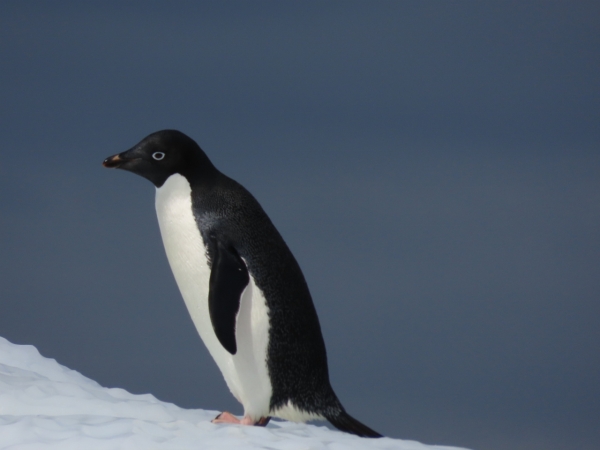
After our second night at sea through the Drake Passage, we woke up in Antarctica. Massive icebergs floated everywhere, some surprisingly close to the ship, in an endless variety of fantastic shapes and sizes. Ashore, steep and snow-covered slopes soared straight up from the water. Antarctica is much more mountainous than we were expecting. Taking in the spectacular scene from the warmth and safety of the National Geographic Endurance, we wondered how those early explorers felt in their small ships when they first glimpsed such forbidding terrain.
Our first landfall was well south of the Antarctic Circle (66° 33′) on Red Rock Ridge in Marguerite Bay at 68° 16′ S. This was the most southern point of the trip, and we would work north from here. As we approached, we were very excited to make our first penguin sighting. Once we arrived, we watched from on-deck as the crew launched zodiacs and decided on a landing point to view an Adelie penguin colony. The small boats, so diminutive beside the huge ice bergs, made the scenery appear even more grand.
Adelie penguins were everywhere at Red Rock Ridge, and we we really enjoyed seeing them up close both on a zodiac tour of the bay and ashore. We also saw crabeater seals snoozing on the ice, and an Antarctic tern colony. And actually stepping ashore on the Antarctic continent was an unbelievable thrill. We’ve now stood on all seven continents of the world.
Below are highlights from December 23rd, 2022 at Red Rock Ridge. Click any image for a larger view.
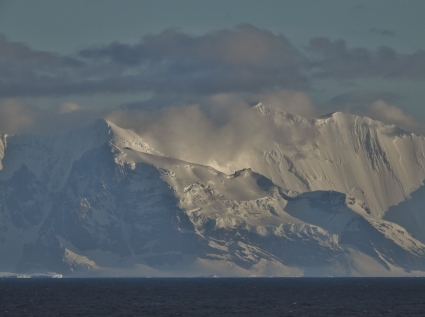

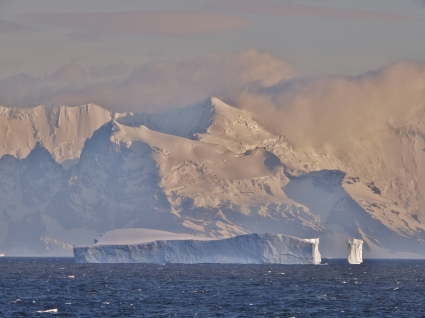
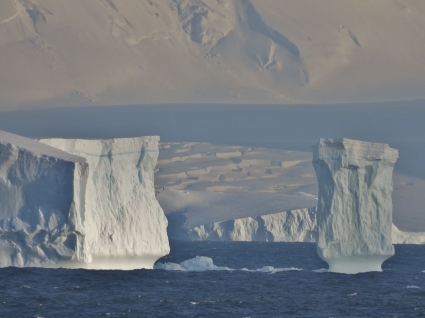

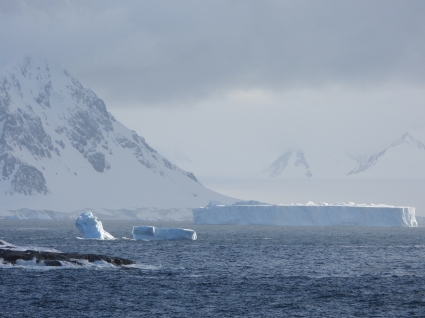
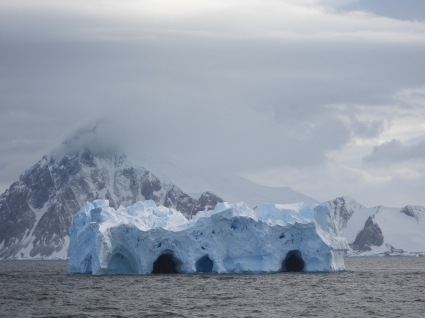
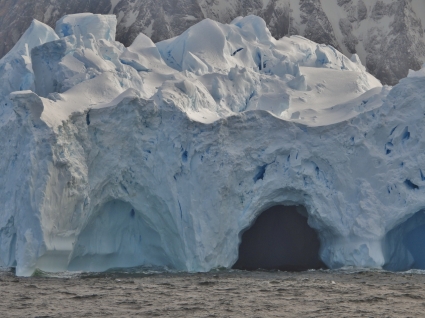
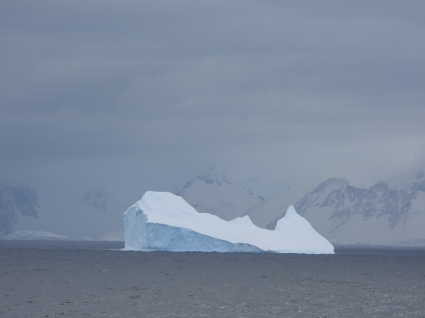
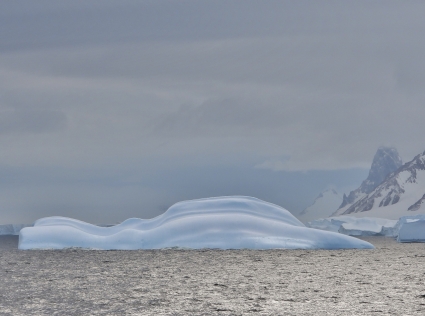
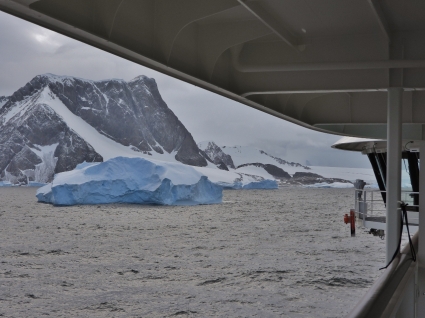
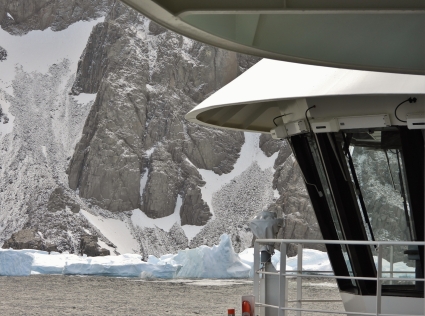

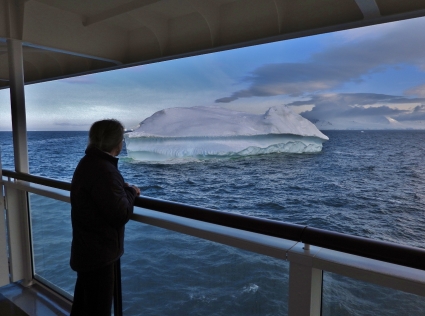
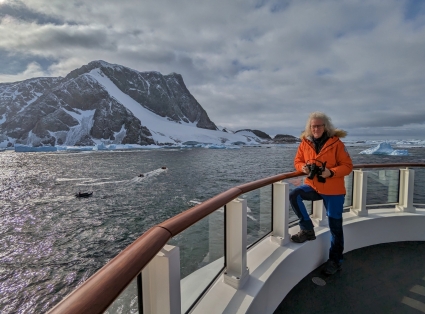
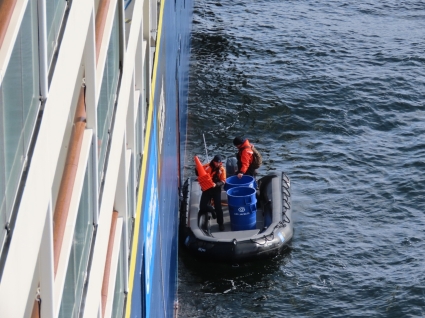
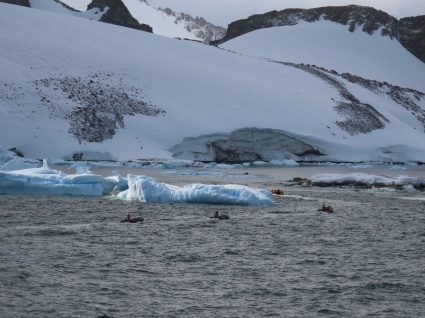
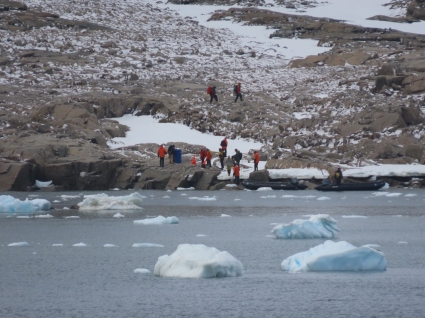
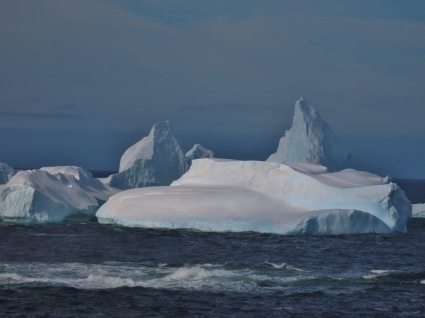

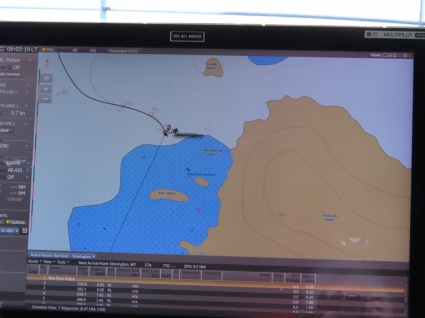

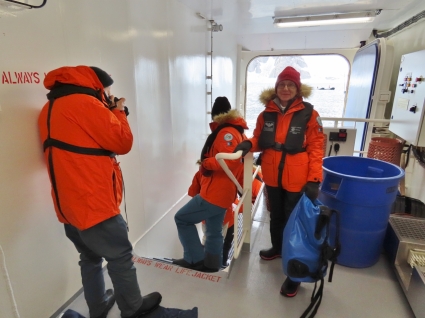
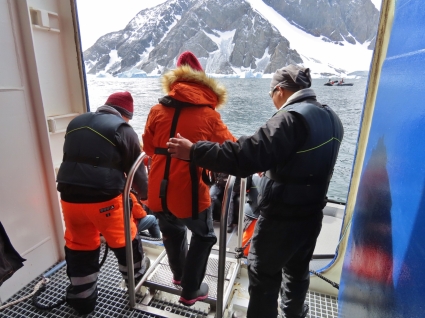
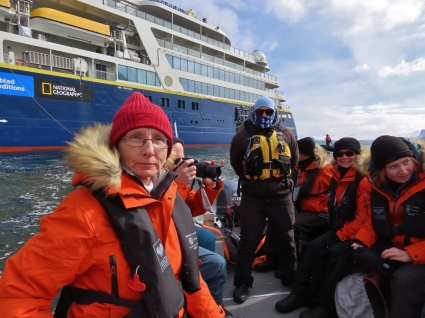
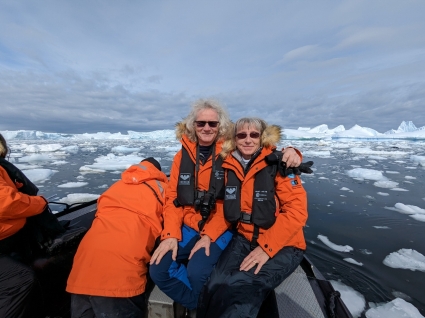
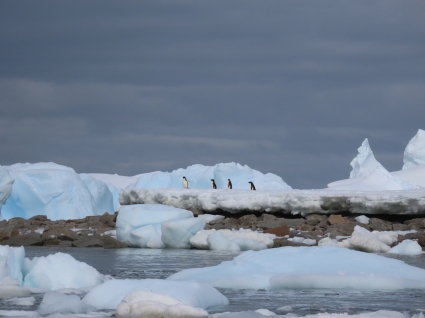


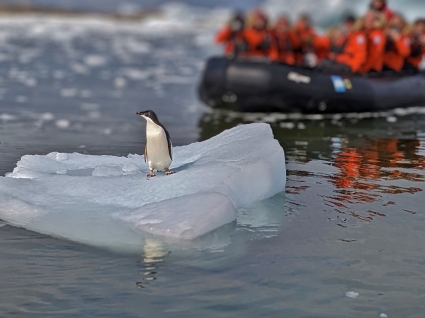

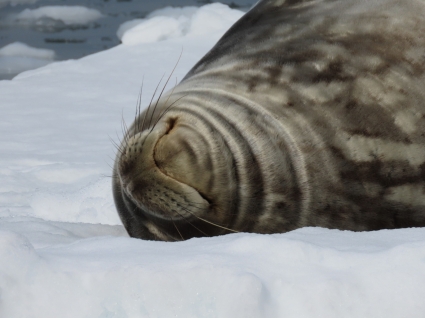
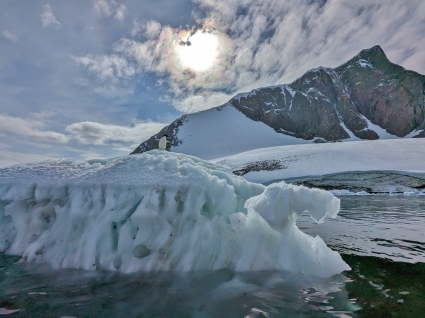
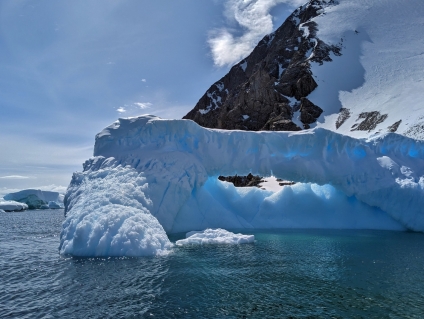
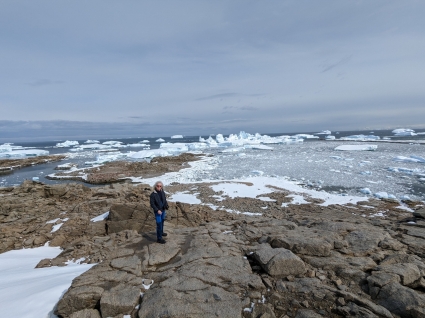

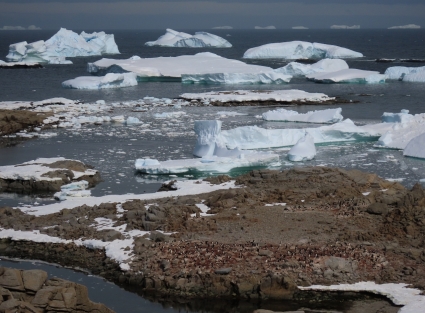
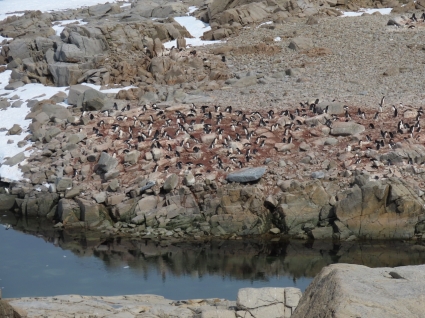
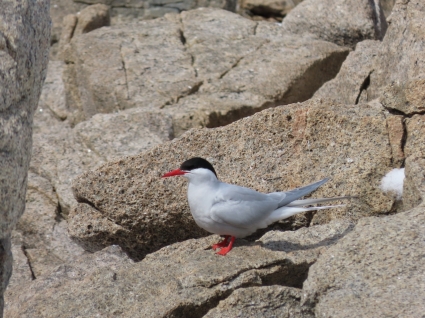
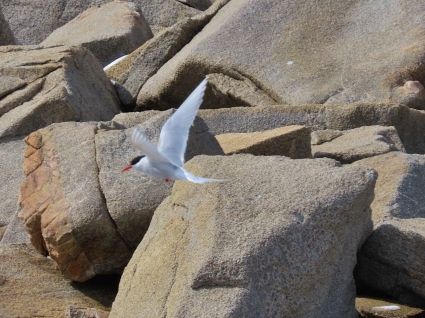
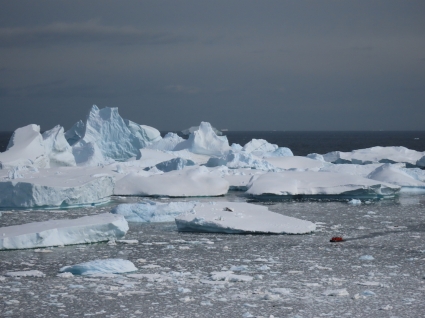
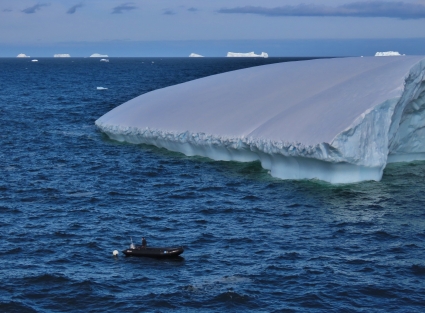
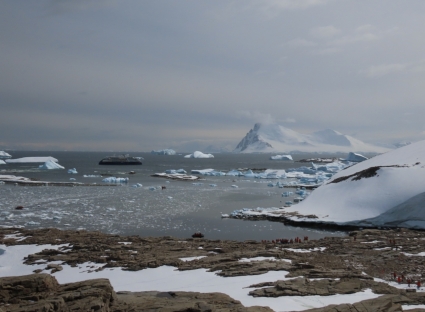
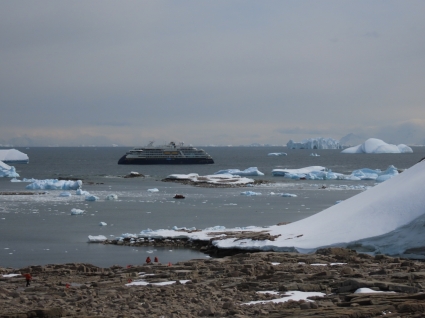


Stunning photos. I had no idea Antartica was so mountainous. The penguins and seals are so appealing. I should put a cruise down there on the bucket list.
Totally agree and, like you, we really didn’t know how mountainous Antarctica was. The highest peak in Antarctica is 16,050′ (Mt. Vinson).
Were your temps considered “normal” for this time of year?
The Antarctic Peninsula is the northern-most part of Antarctica and it was the middle of summer when we were there where daily highs in the 28F to to 40F range is pretty typical. More southern parts of Antarctica and especially those inland and away from the moderating influence of the ocean are far colder. NASA reports the East Antarctic Plateau has seen temperatures as low as -138F. These are space-based surveys — nobody was there at the time. Where we were on the coastline of the Antarctic Peninsula was comparatively toasty warm but what was really noticeable was how dry it was. Almost desert-like from a moisture perspective.
What was the air and water temperature when you were there in Antarctica?
Ironically, the air temps during our time in Antarctica was warmer than what Seattle was seeing. Usually in the 30 to 35F range and we got lucky and didn’t see much wind while we were there. It was a different story on the way back across the Drake passage where the winds were gusting over 60 with waves as high as 30′.
Antarctic sea temps were right around freezing as well.